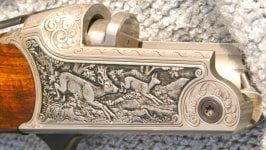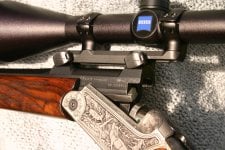ElmerThud
Handloader
- Jul 16, 2011
- 832
- 198
Guy Miner":2pc1qvgp said:You know... There are dies with NO expander ball? Just neck size the brass...
Works great. Regards, Guy
Presumably in a neck sizing die rather than F/L die?
Or, in a F/L die so the shoulders are bumped back?
Does that work if you just remove the decap expander/rod from the die Guy?
I haven't ever thought of that, but would kind of guess bullet seating could be tight?
I'll have a go & see what happens when I next have a couple of fired cases. Mine are all now resized or reloaded.
@ Darkhorse - Nope, personally my ammunition consistency & accuracy is excellent for hunting, which is 'my thing', so I have never & don't intend to bother case neck turning.
I absolutely know I could take a red stag out to 400yds, but never would. I regard 300-320 as absolute max & then, only if it's really necessary. I'd much rather stalk in closer and take a 100-200 yd shot. Field craft. That's the key.
Cheers, ET










